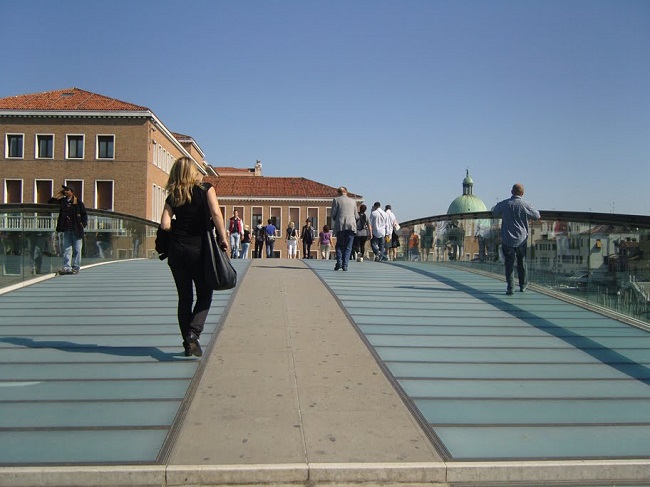
Venice continues to address issues with the modern bridge, replacing the glass on the stairs with stone
 |
Venice – The Italian city of Venice has decided to take radical steps to address long-standing issues with the modern bridge over the Grand Canal, designed by the renowned Spanish architect Santiago Calatrava. The glass and steel structure, located near the Santa Lucia train station, has faced complaints due to its slippery surface and low durability of materials. The city hall is therefore now preparing to replace all glass steps with stone ones, reported The Times.
The new pedestrian bridge has been operating since 2008, and few question its aesthetic value. According to many, its designer sensitively integrated into the historic city, thanks in part to the transparency of the chosen material. However, the choice of glass for the surface of the bridge has also caused a number of problems. During rain or humidity, people complain that the bridge is slippery, and winter frost creates even greater challenges for pedestrians and maintenance.
"Calatrava loves glass, but people often fall and sue us," says Francesca Zaccariotta, who manages public space maintenance in the city. According to her, many tricks have been tried without success to resolve the issues – such as the application of anti-slip resin or strips, but none of these measures have had long-lasting results.
In 2018, the city spent 160,000 euros (four million crowns) to replace the glass on the steps in the most dangerous sections with trachyte – a light volcanic rock. "That works well, so we set aside another 500,000 euros in the budget to equip all the steps with trachyte," adds Zaccariotta.
Calatrava's bridge has been a source of controversy since its inception. Costs have more than doubled the original budget and reached 12 million euros (303 million crowns), and the bridge was also not wheelchair accessible, which required the addition of an elevator for people in wheelchairs. Construction interventions have also been necessitated by excessive vibrations.
The city will seek the architect's consent to use a different material for the steps, but according to Zaccariotta, work can begin even without his approval. "Even if he says no, we still have an obligation to ensure it is safe. We can build beautiful things, but they must work. In the case of this bridge, it is necessary for people to get from one side to the other," she said.
The English translation is powered by AI tool. Switch to Czech to view the original text source.
0 comments
add comment










